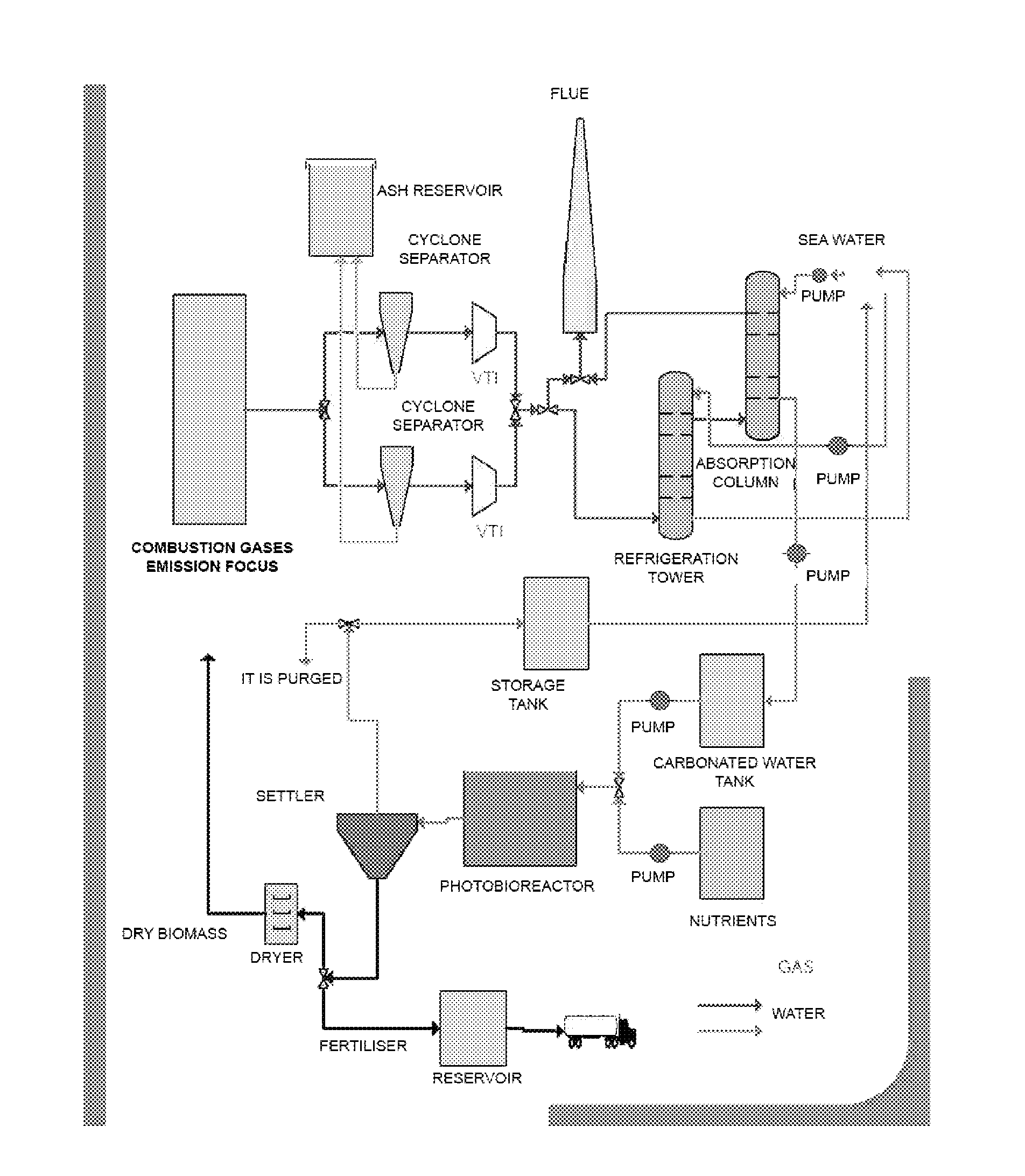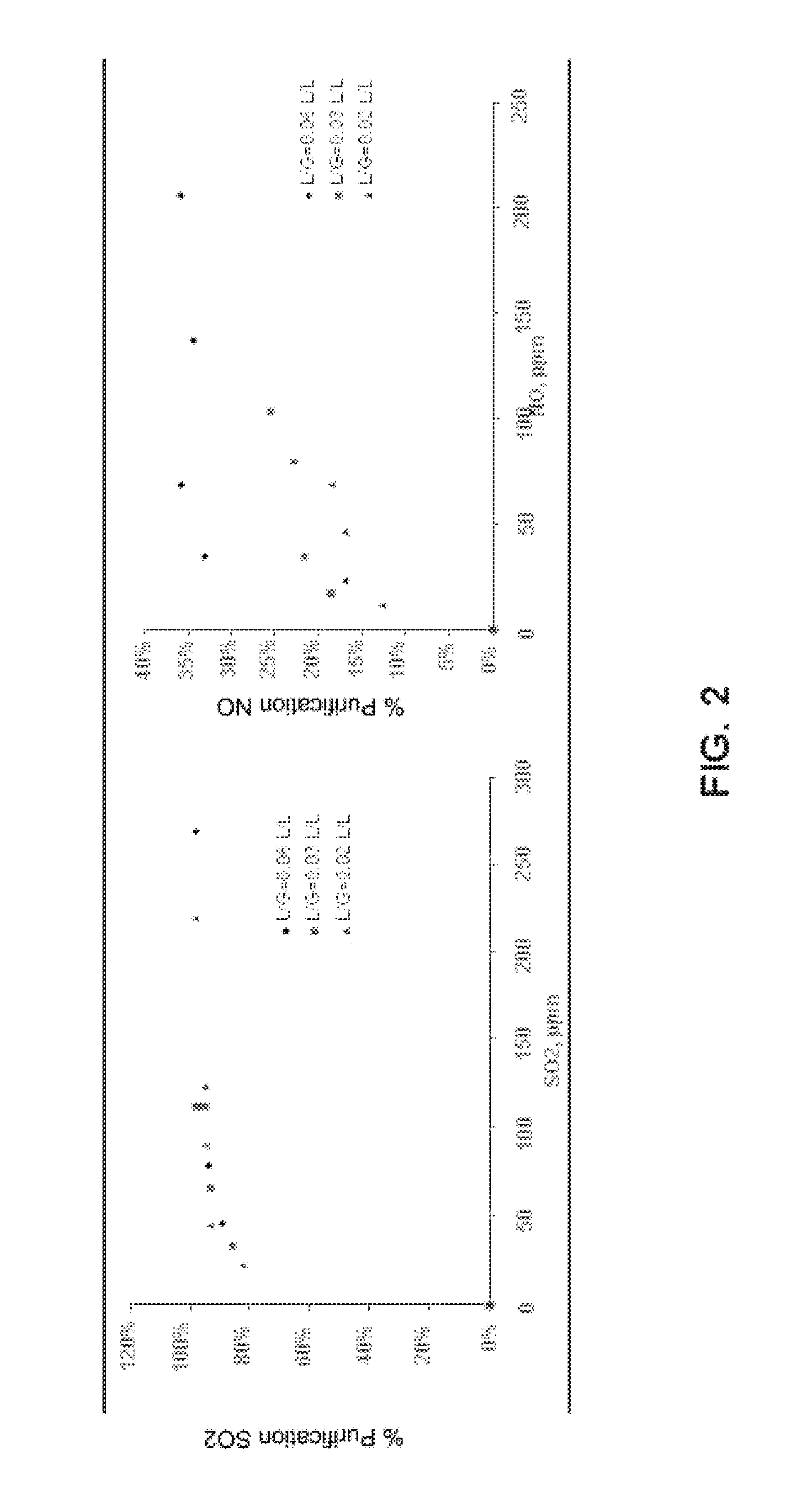Liquid-phase gas collection
a technology of liquid phase and gas collection, applied in the field can solve the problems of reducing the efficiency of liquid phase gas collection so as to achieve the effect of reducing the risk of contamination
- Summary
- Abstract
- Description
- Claims
- Application Information
AI Technical Summary
Benefits of technology
Problems solved by technology
Method used
Image
Examples
example
[0047]In this example, the inventors have designed a demonstration plant that makes it possible to assay the process of the invention, with a 250-l fluidisation column, for the purification of gases from a gas-oil boiler.
CO2 Capture System
[0048]The capture of CO2 was performed in a 250-l fluidisation column, humidifying the gas stream with the liquid phase. The system bears inundation flow rates of 20 l / min of liquid and 350 l / min of gases, the minimum flow rate to wet the column being 4 l / min of liquid (experimental data).
[0049]The liquid phase was prepared by adding about 11 g / l of NaHCO3 and 22 g / l of Na2CO3, reaching a pH of 10. The total concentration of inorganic carbon was 4.0 g / l.
[0050]Under these conditions, a CO2 purification efficiency of 80% may be achieved, as well as purification efficiencies of 50% and 95% for NOx and SOx, respectively.
[0051]Operating with this column, with 10% binary air-CO2 mixtures as the gas phase and water from the mains as the liquid phase, the ...
PUM
| Property | Measurement | Unit |
|---|---|---|
| Concentration | aaaaa | aaaaa |
| Concentration | aaaaa | aaaaa |
| Concentration | aaaaa | aaaaa |
Abstract
Description
Claims
Application Information
 Login to View More
Login to View More - Generate Ideas
- Intellectual Property
- Life Sciences
- Materials
- Tech Scout
- Unparalleled Data Quality
- Higher Quality Content
- 60% Fewer Hallucinations
Browse by: Latest US Patents, China's latest patents, Technical Efficacy Thesaurus, Application Domain, Technology Topic, Popular Technical Reports.
© 2025 PatSnap. All rights reserved.Legal|Privacy policy|Modern Slavery Act Transparency Statement|Sitemap|About US| Contact US: help@patsnap.com



